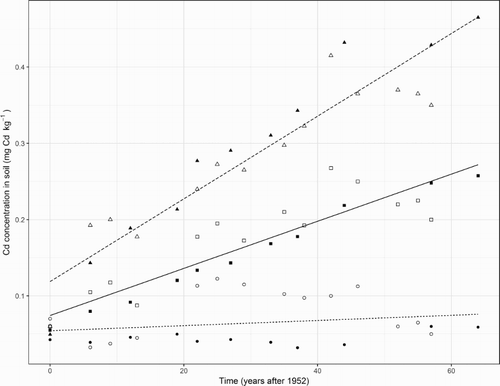Figures & data
Table 1. Measured cadmium (Cd) concentration in SSP (phosphorus, P) fertiliser made of phosphatic rock samples from Nauru, Christmas Island and North Carolina.
Table 2. Estimated mean cadmium (Cd) input rates for periods determined by the SSP (phosphorus, P) fertiliser blends (see for nomenclature and Cd concentration data) based on interpretations of blend descriptions provided by the Fertiliser Association of New Zealand (Anonymous Citation2008).
Table 3. Measured physical characteristics of soil samples collected in the irrigation trial plots (mean ± 95% CI).
Figure 1. Relationships between soil cadmium (Cd) density (product of Cd concentration and the bulk density) and depth, represented by a midpoint of the sampling interval, in the plots which received one level of irrigation and three levels of phosphorus (P) fertiliser, including 0 (◊), 17 (○) and 34 (Δ) kg P ha−1 y−1. Also shown in panel B are the regression lines. The regression slope and intercept were: 2.52 and 4.12 for 0 kg P ha−1 y−1, −5.84 and 5.67 for 17 kg P ha−1 y−1 and −5.35 and 6.22 for 34 kg P ha−1 y−1.
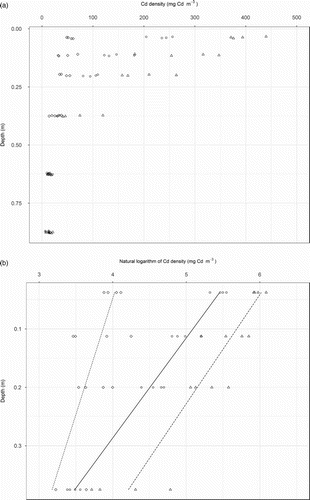
Figure 2. Relationships between cadmium (Cd) density in the soil and depth, represented by a midpoint of the sampling interval, measured in plots which received one level of phosphorus (P) fertiliser (22 kg P ha−1 y−1) and no irrigation (◊) or irrigation when soil water content reached 10% (○) and 20% (Δ). Also shown in panel B are the regression lines. The regression slope and intercept were −6.05 and 6.08, respectively.
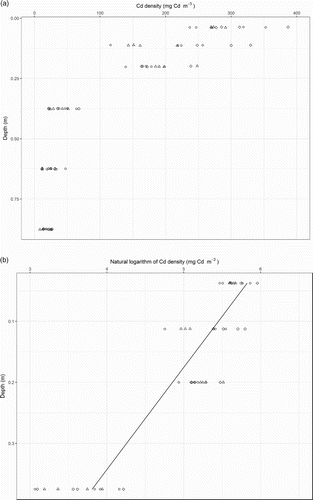
Figure 3. Relationships between the back-transformed regression estimates of cadmium (Cd) density in the soil and depth, represented by a midpoint of the sampling interval, in plots which received one level of irrigation and no fertiliser (solid curve) or phosphorus (P) fertiliser applications at 17 kg P ha−1 y−1 (curve with the shortest dashes), 22 kg P ha−1 y−1 (curve with intermediate-length dashes) and 34 kg P ha−1 y−1 (curve with the longest dashes).
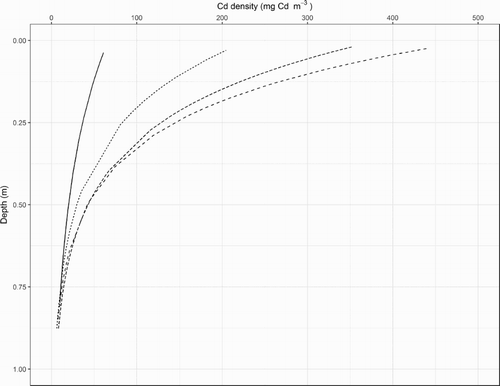
Table 4. Measured chemical characteristics of the soil samples including soil pH and the concentrations of oxalate extractable iron (Fe), aluminium (Al) and total carbon (C) (mean ± 95% CI).
Figure 4. Relationship between the estimated cumulative cadmium (Cd) input to plots and the mean cumulative Cd stock (0–0.5 m samples collected in 2009). For the data from left to right, the plots received annual phosphorus (P) applications (inputs) of 0, 17, 22 and 34 kg P ha−1 y−1. In addition, the estimated atmospheric deposition (input) rate was 0.2 g Cd ha−1 y−1 (Gray et al. Citation2003a). An estimated 10% of the total Cd input was lost by leaching (Gray et al. Citation2003b), and loss in outwash of 5% of inputs for the 17 and 34 kg P ha−1 y−1 fertiliser treatments and 10% for the 22 kg P ha−1 y−1 treatment (McDowell Citation2010). Also shown is the regression line.
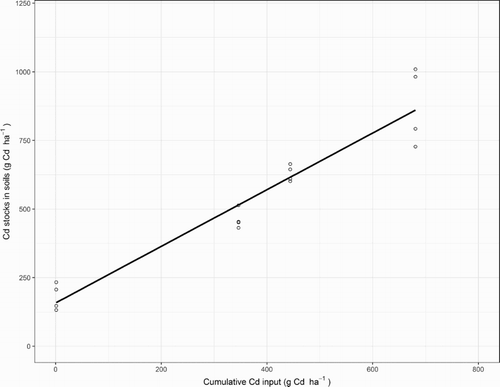
Table 5. The difference between soil cadmium (Cd) stock to a depth of 0.5 m in plots which received annual phosphorus (P) fertiliser applications from 1952 to 2009 and the mean soil Cd stock in four control plots which were not fertilised (180 ± 77 g Cd ha−1, mean ± 95% CI, n = 4 plots; for 17, 22 and 34 kg P ha−1 y−1, n = 4 plots each).
Figure 5. The frequency distribution of rainfall in August (mm) for the years 1952–2009 with the area under the curve equal to unity. The left-hand vertical line was plotted at 32 mm, the mean potential evaporation for August. The right-hand vertical line was plotted at 79 mm, the rainfall used to estimate drainage from the soil in August (47 mm = 79 mm–32 mm) for Burn’s equation.
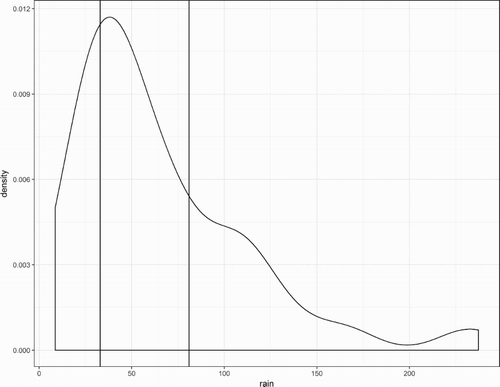
Table 6. Measured cadmium (Cd) stock in the soil as a percentage of the cumulative stock to a depth of 0.5 m in plots which received annual SSP fertiliser applications from 1952 to 2009 (mean ± 95% CI, n = 8 plots).
Figure 6. Relationship between measurements of cadmium (Cd) stock in soils to a depth of 0.075 m and to a depth of 0.5 m in plots which received no fertiliser (◊) or phosphorus (P) applications of 17 (○), 22 kg P ha−1 y−1 (▴) and 34 kg P ha−1 y−1 (Δ). Also shown is the regression line which had a SE of 130 g Cd ha−1, 20% of the mean Cd stock to a depth of 0.5 m.

Figure 7. Relationships between time and the mean cadmium (Cd) concentration in soils to a depth of 0.075 m measured in plots which received no fertiliser (○ from McDowell (Citation2012) and ● from Gray et al. (Citation1999b) and this study) or phosphorus (P) applications of 17 (□ and ▪) and 34 kg P ha−1 y−1 (Δ and ▴). Also shown are regression lines fitted to the data for the plots which received 17 kg P ha−1 y−1 (solid) and 34 kg P ha−1 y−1 (dashed) as described in the text.
